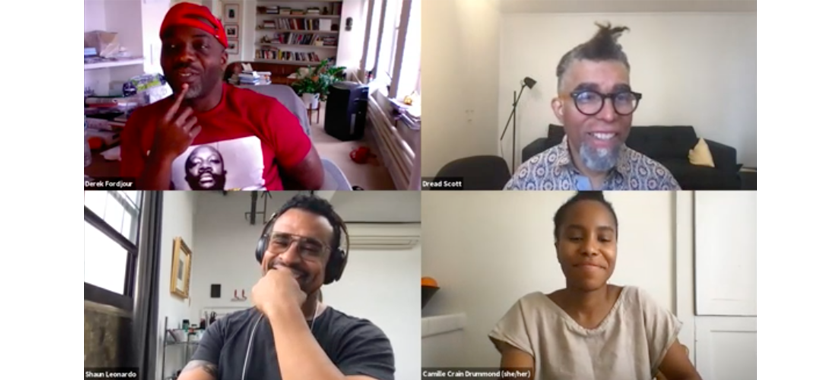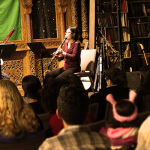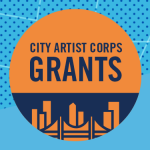Conversations | Blacklist: Derek Fordjour, Shaun Leonardo, and Dread Scott on the Role of Activism in Art
Three NYSCA/NYFA Artist Fellows discuss the experience of making art that explores hard truths and imagines a better future.
NYFA’s 50 Year Anniversary Talk Series kicked off with a dynamic conversation between interdisciplinary artists Derek Fordjour (Painting, ’18), Shaun Leonardo (Painting ’08), and Dread Scott (NYFA Board, Sculpture ’01, Performance Art/Multidisciplinary Work ’05, Interdisciplinary Work ’12) on their ideas, process, and concerns of creating art that is deeply rooted in the Black experience.
The conversation was moderated by Camille Crain Drummond, Editorial Director at New York Consolidated, and began with each artist sharing works that were used as the basis for dialogue: Fordjour’s Benched, Haberdashery, and The Second Factor of Production; Leonardo’s Freddy Pereira (Drawing 2) and I Can’t Breathe; and Scott’s Blue Wall of Violence and Slave Rebellion Reenactment.
Using the works as a jumping off point, the artists continued the conversation by exploring how art confronts viewers in ways that other outlets cannot, generates dialogue and creates greater cultural meaning, and works to achieve change.
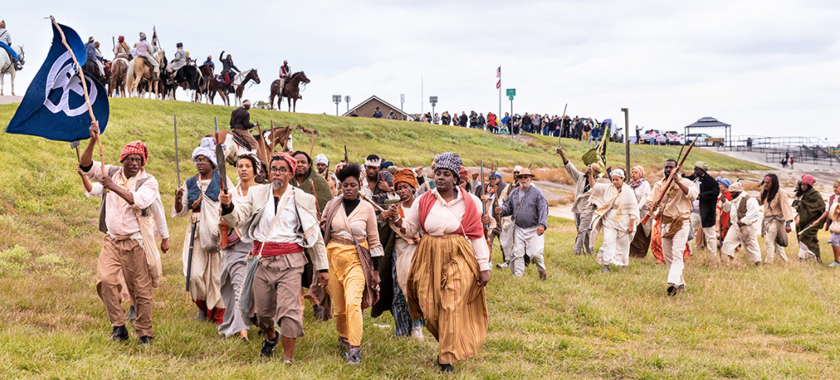
Active Viewership
While the entry points differ, each artist places the viewer into an active role in their work.
“I think about the viewer a lot. From my earliest work, I was doing installations for audience participation where I really wanted to shift the responsibility from the audience just looking passively at work to actually being involved in it in some way…as a means of having socially-engaged or political work that wasn’t something that people could just dismiss, or agree with,” said Scott.
Fordjour commented, saying that both Leonardo and Scott’s work “gets the body temperature and the actual body going in very active ways.” He reflected that his own work operates at a more subtle, perhaps more passive level and asked “Is it enough to make an attractive thing that goes on the wall? In this idea to seduce people with beauty as a strategy, is it all bunk?”
“Is it enough to make an attractive thing that goes on the wall? In this idea to seduce people with beauty as a strategy, is it all bunk?”
-Derek Fordjour
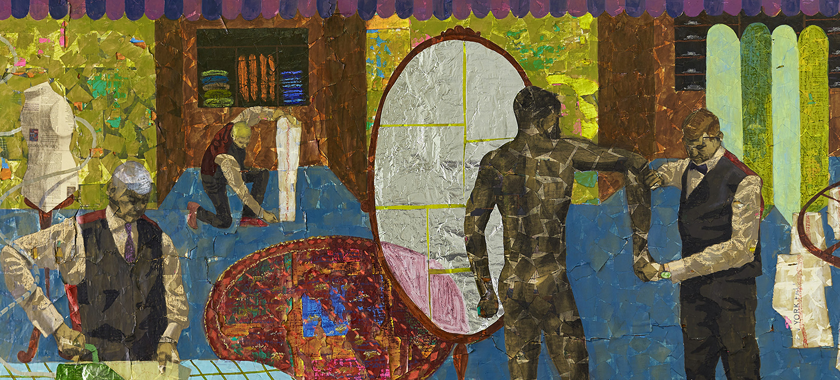
Scott responded by saying “I think it’s important to have work that sits on a wall that allows a more contemplative space in a certain sense that isn’t visceral in quite the same way. I think that this question of how you think about these questions—it’s not dependent on form.”
Leonardo, who straddles both worlds, said “In regards to how we instigate the subject of violence and death, any and all strategies are necessary…The slow immersion that pulls a person in is something that I certainly utilize and appreciate out of my practice in the studio. But I also believe that I personally could not find that solace of a drawing practice if I did not have that fiery aspect of performance in my work.”
Black Bodies
Fordjour referenced the Black body in his work, citing Arthur Jafa: “Black people were a non material people that came here and owned nothing. It was illegal, right? So in the face of owning nothing, we owned only to a limited degree our own bodies. So he [Jafa] has this notion that Black genius rests in the body. That turning the body into raw capital and trying to sort of realize a profit from mastering your own body.” He noted the attraction to and fascination with the Black body and Black athleticism, but also the desperation of trying to “convert through catalytic means, one’s own body into a profit-generating center.”
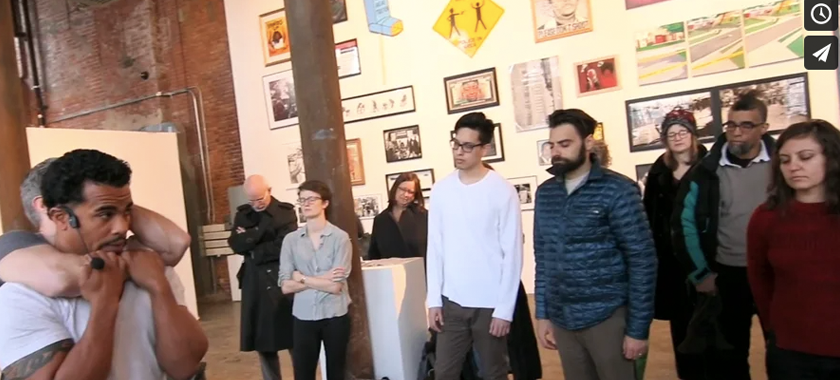
Leonardo said “When I think about I Can’t Breathe in particular, the ways in which the viewing of Eric Garner’s killing can be so unsettling and destabilizing that it lodges itself within our psyche and body. But as a practiced fighter, I understood for myself that there was a way in which that trauma and fear could be utilized as fuel.”
He spoke about Black people and law enforcement, adding that for Black people, “Our mastery of the body is always connected to the ways in which those outside of us would prefer to manipulate our bodies. Our joy is always tied to the complexity of trauma and sadness. The ways in which we are free is always connected to the way we embody fear. But we can move through all of those things to achieve what Ta-Nehisi Coates calls ‘The beautiful struggle.’ We can still live full lives with the complexities of all those things overlapped.”
“Our joy is always tied to the complexity of trauma and sadness. The ways in which we are free is always connected to the way we embody fear.”
-Shaun Leonardo
The conversation returned to this topic, particularly around the idea of Black and Brown bodies in sport and how they help to power systems of profit and spectacle.
Art and Activism
During the audience Q&A, an audience member asked “Does activist work need to lean towards the didactic to reach audiences outside of the art world?”
Scott identifies as both an artist and an activist. “A lot of times with activism, you’re trying to achieve one particular or specific aim: get somebody off Death Row, stop the police from murdering people, bring justice for a particular person who’s been killed by the police…And with art, a lot of times I’m trying to pose questions. The questions can be leading questions, the questions can be questions I have opinions on—sometimes very strong opinions on—but I think the art tries to pose questions about ‘What about U.S. patriotism? What is the role of the United States? Could we imagine a world without America?’ With Slave Rebellion Reenactment, ‘How are people going to get free?’ In many ways they are much more open-ended than activism. But I think both are necessary.”
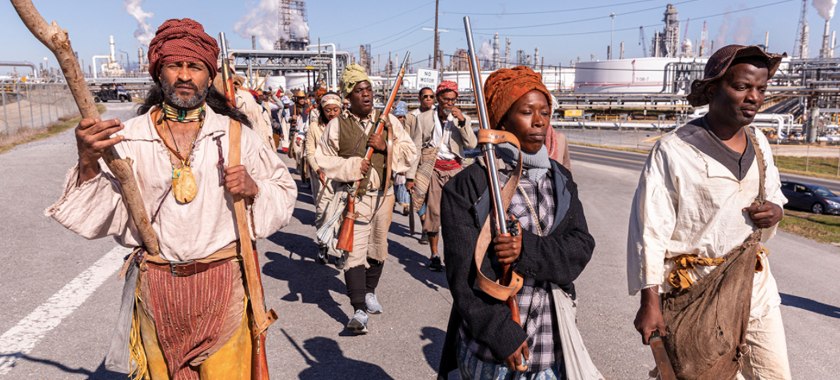
For Leonardo, “Didacticism often gets a bad name in this space or amongst artistic circles. But as a person that employs his performance practice within the work of system intervention, specifically through the criminal courts, I like to push back and challenge the ways that activism believes there to be a particular artistic visual language that’s necessary. I think one thing can have many entry points, particularly as it reverberates out into various needs and ways of moving into spaces of power. I want to echo something that Dread said, that in order to imagine abolition, one has to visualize the steps to that space where we are not reliant or oppressed by systems that cause harm. The arts have a direct role in that visualization.”
Fordjour pointed to art as a means of achieving change, saying “It starts with the idea. We all traffic in ideas—that’s contemporary art. But that is the currency of change. And so when we think about it in those terms, I think the ramifications can be significant.”
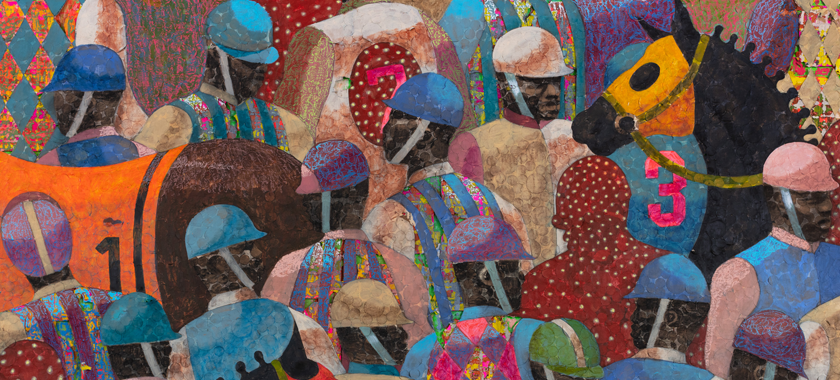
Doing Truth Work
The conversation concluded with the audience question “You’re each taking a lot on your shoulders in terms of responsibility to drive change. Who do you look to and lean on to support you through this?”
Fordjour cited love in all its many forms as a driving factor, and recognized Scott and Leonardo as colleagues who provide inspiration and help to underscore that he is not working in isolation. “I will say that the kind of work that I make, there is catharsis. That is why I make work. It makes the world more livable for me, because there are so many injustices that if you tune into them wholesale it’s debilitating. So making art gives me a sense of agency, because I control the narrative in my works whether it’s an illusion or not, and it makes me believe that change is possible.”
Leonardo said “As difficult the imagery is that I tackle in my two-dimensional work, it is in the studio that I am offered a space and time for processing and healing. And that’s where I can exist, it’s not offered to me elsewhere. In terms of my socially-engaged work, my performance practice, it’s being in relationship with community and having a sense of love with community, that the work feels reciprocal. I’m gaining as much as I’m putting forth.”
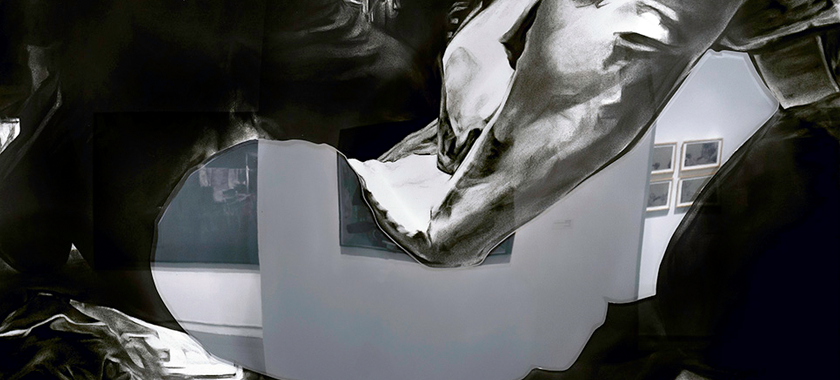
Scott spoke to the transformative nature of art, saying “You deal with heavy subjects, but the work can be profoundly uplifting and stirring. And I also think that I’m inspired by when people fight back and rise up. May and June of last year, George Floyd could have been just another Black person that we’d seen video of the police killing. And instead, people all over this country said ‘No, enough. We’re going to fight this.’ And it was beautiful, joyous resistance with the hope for change…My work and I think the work of my colleagues and comrades here is about trying to get to a different world where people are valued and our humanity is not called into question and where the excellence that exists in a lot of people can be celebrated and not seen as a threat.”
“You deal with heavy subjects, but the work can be profoundly uplifting and stirring.”
-Dread Scott
To close things out, Fordjour noted “We’re doing truth work. And I think that there is liberation in truth telling, even if liberation means death. But telling the truth, your truth over and over and over has a liberating effect that I think makes our work doable. So I think from the outside when you see the issues we’re dealing with it looks heavy and oppressive. But I think from the inside, there’s liberation in truth.”
—Amy Aronoff, Senior Communications Officer
“Blacklist” was presented as part of our 50 Year Anniversary Talk Series, a new series of talks on issues impacting artists today. The second discussion, titled “Artists in Uncertain Times,” will feature Luc Sante, Greg Pardlo, Kathleen Chalfant, and Saïd Sayrafiezadeh in conversation on Wednesday, June 16. In late June, we’ll sit in on Julie Taymor and Mira Nair discussing their experiences breaking into the film industry and screen a full showing of Swoon’s Cicada stop motion animation.
Interested in supporting NYFA? Click here to donate. Sign up for NYFA News and receive artist resources and upcoming events straight to your inbox.

